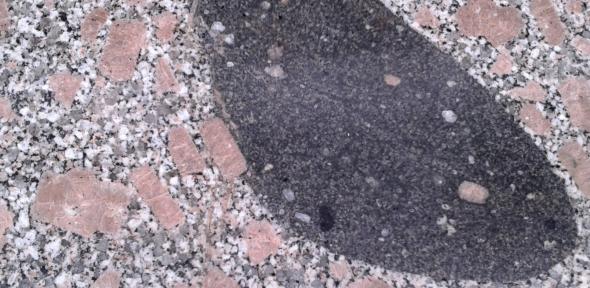
Submitted by Administrator on Mon, 19/11/2018 - 14:11
G5a - the distinctive coarse-grained, pink granite exposed at Shap in Cumbria - has long been a favourite igneous hand specimen for Earth Sciences teaching in Cambridge. New research uses the age of zircon crystal formation to suggest a long gestation period in the mid-crust before its final emplacement 405 million years ago.
Cambridge Earth Scientist Nigel Woodcock, and Andrew Miles at the University of Leicester, measured the abundance of uranium and lead isotopes within zircon crystals in the Shap granite. The average zircon age is 415 million years; up to 10 million years older than published dates for the formation of other crystals and the rock as a whole.
This time difference is indicative of a complex evolution, from crustal rock first melting to form granitic magma, through crystallisation, intrusion in to pre-existing rocks above, and solidification. Field observation of the relationship between the Shap granite and surrounding rocks suggests final emplacement occurred around 405 million years ago. This means many of the zircon crystals were forming before the granitic magma solidified fully.
Woodcock and Miles suggest a prolonged, three-stage history of magmatic activity at Shap. 428 million years ago, mantle melting led to the melting of the crust and the formation of granitic melt in the middle of the crust. Over the next 20 million years, the composition of the granitic melt evolved as crystals such as zircon formed, and occasional new magma was injected. Finally, 405 million years ago, the granite was emplaced to form the outcrops now seen at Shap.
The work shows that the majority of zircon crystals form in early magmas, before the final emplacement of a granite. The youngest zircon ages can be coincident with a granite’s final emplacement, but multiple dating techniques should always be combined to reveal the full geological history.
A combined geochronological approach to investigating long lived granite magmatism, the Shap granite, UK, A.J. Miles and N.H. Woodcock is published in Lithos.
